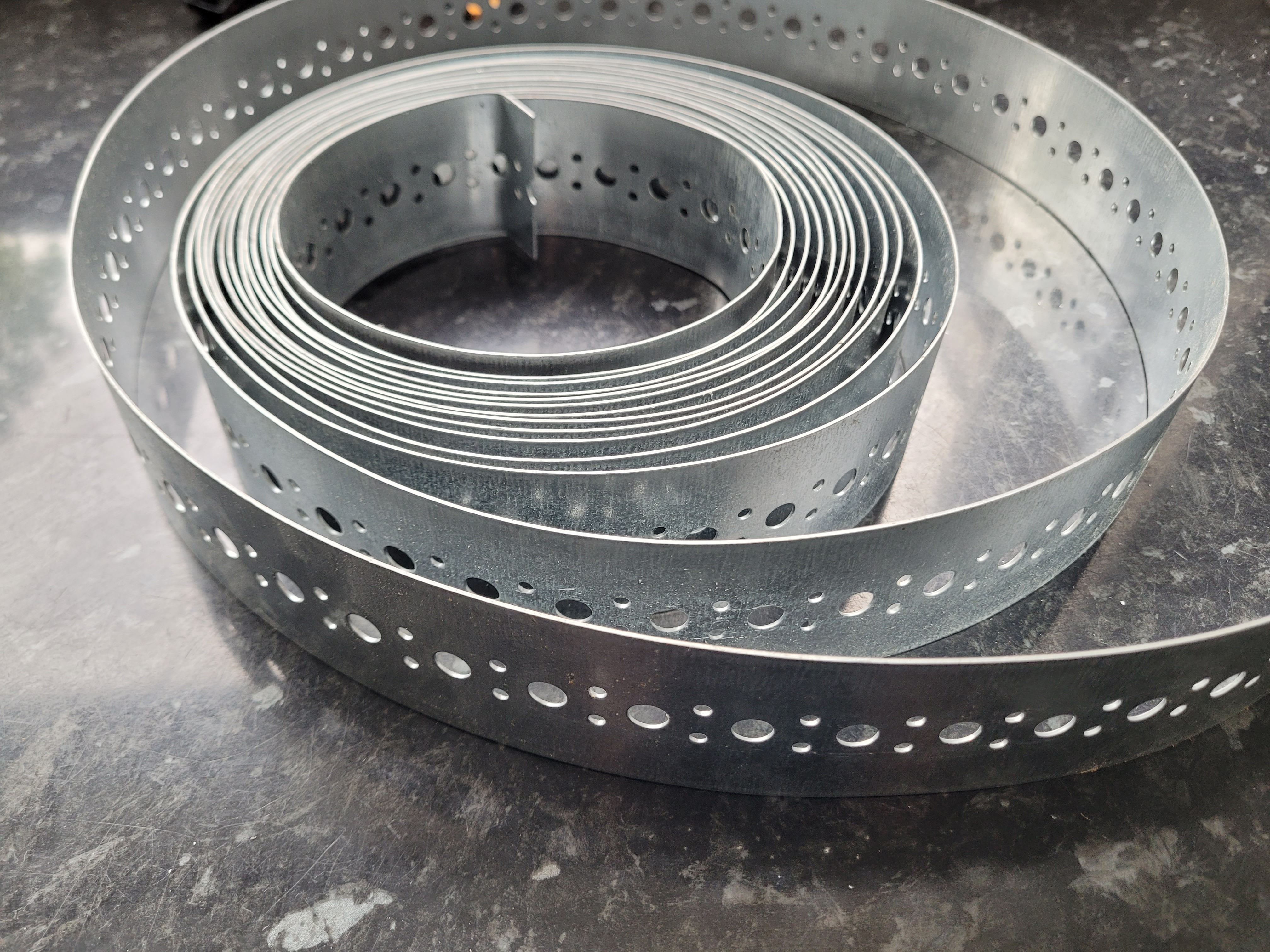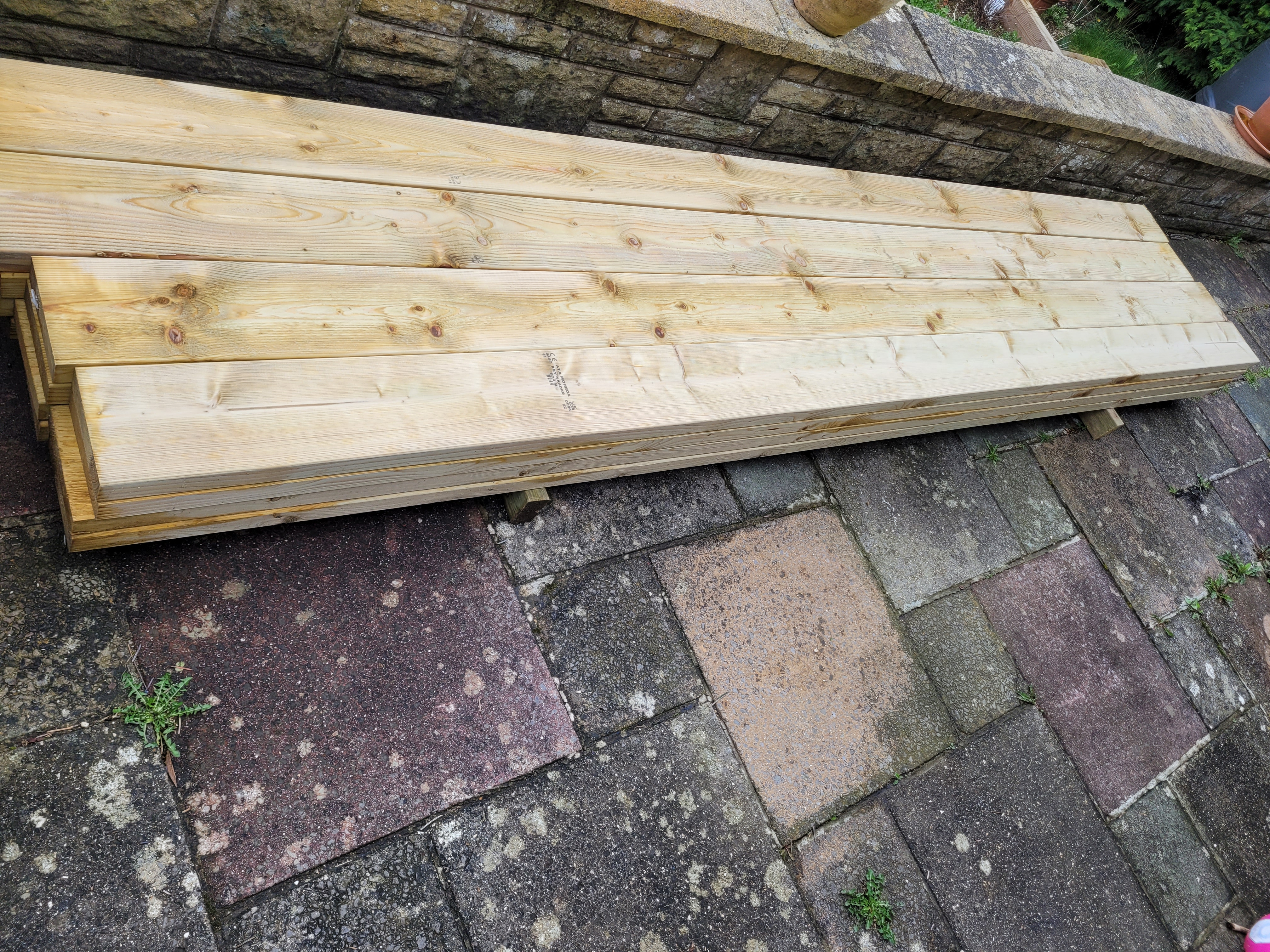We’d like to remind Forumites to please avoid political debate on the Forum.
This is to keep it a safe and useful space for MoneySaving discussions. Threads that are – or become – political in nature may be removed in line with the Forum’s rules. Thank you for your understanding.
📨 Have you signed up to the Forum's new Email Digest yet? Get a selection of trending threads sent straight to your inbox daily, weekly or monthly!
Extra long planters for bamboo
Comments
-
Thanks. Do you think 30mm wide strapping would be wide enough to hold the planks?
My question above assumes that you mean running the strapping horizontally between the planks and fixing all the way along?
This would only give 15mm fixing on each side of the join with quite a lot of weight.
I would use in conjuntion with angle irons, corner brackets and antiburst joining with offcuts every metre
0 -
I do have some strapping which is 50mm wide. Not enough to run around the entire beds horizontally but could cut down and secure vertically? Running horizontally would mean about 10m of strapping per layer so 40m in all to do both beds which seems like a lot!
Sorry if I'm sounding stupid on all of this!0 -
Sorry, I wasn't clear.
3 planks laid flat, tight against eachother, ends aligned, to make one 'side'. Straps cut to ~400mm lengths (Ie, slightly shorter than whole side height as you don't want them visible above soil level), laid across all three boards at right angles, and 1.25" screws (if boards are 2" thick fired in. Over 3.6m, you'd need, ooh, a strap towards each end, and say three others spaced in-between. As you lift this constructed side upwards, the planks will probably flex/move - 'hinge' - towards the strapped side, but not the other way. Once made in to the trough frame, it should be very sturdy. If you run a thin bead of polyurethane glue along each join, then it should end up completely rigid, but make sure it's flat!
Tbh, I'd personally rather use timber battens instead of metal straps, as they will be more rigid, and can also be glued - use 'foaming' polyurethane glue such as Gorilla. Also a thin bead along the joining plank edges - not too much as it can foam out the join and will need trimming away, tho' not a biggie.1 -
Thanks again - i do appreciate your input. I do have strapping so that's one less expense and have some 2x2 that i could use for extra strength.
Kinda wondering if the angle irons are needed if there is strapping and antiburst wood along the planters? Wondering from a money saving point of view.
I called a farm supplier this morning who can fabricate 1m pointed 50mmx50mm, 5m thick angle irons predrilled for £20 inc vat which seemed okay given the thickness and width. For both beds, thinking that i may need two on each side, i would need 8 which would be £160. Will do it if need be for longevity but trying to control budget
Thanks!0 -
This is the strapping

1 -
Oh and wood delivered this morning so getting ready to get going!
My thought was to build each layer of the frame then join the 3 together afterwards but you think easier to join the planks and then connect the ends?
1 -
I think the angle-iron idea made by another poster was a good one IF you were intending to make this into a proper raised planter with a bottom. In essence, I think the idea was to use them as posts into the ground which would also lend strength to the corners.Since you seemingly don't want these troughs raised by any distance, but instead look pretty much as tho' they are sitting on the ground (like the pic you added), then I'd personally take advantage of that design by using the trough as a 4-sided frame to contain the soil, but not hold its weight.As far as I can see, the only weight these troughs need to carry is themselves. So, it doesn't need anchoring to the ground, or raised on corner posts, it just needs 'holding' off the ground in order to keep the timber dryish.So, I personally wouldn't use angle-iron posts or anything. I'd side the sides on whatever you have - I have some Devon stone here which I'd probably use - clubbing them into the ground until they are the same height. Or, I might buy some 200x100 paving bricks - they're around 80mm high and neat. Or, pieces of composite post. Really, whatever.Once they are lined, with the lining sitting on the ground under the 4 sides, it ain't going anywhere. It should sag or bend 'cos there's little actual weight on the trough. It'll just need the long fronts and backs secured tethered together to prevent them from being pushed outwards.What are your plans for joining the panels together at their corners?1
-
First job - Give them several coats or preservative. Pay attention to the ends as it will suck up what ever you paint on.twopointfour1980 said: Oh and wood delivered this morning so getting ready to get going!
Any language construct that forces such insanity in this case should be abandoned without regrets. –
Erik Aronesty, 2014
Treasure the moments that you have. Savour them for as long as you can for they will never come back again.1 -
Preservative coating noted!
Plan for the corners is to use butt joints to join the panels together and then use metal corner brackets inside to give some extra strength, spanning the gaps between each plank - i.e two corner brackets in each corner
If i put a mitred cover on the top, then when i join this, it will help to give the top some rigidity as well.0 -
Oh, and thanks again everyone for your input - as a newbie here, the responses have been really kind and helpful!2
Confirm your email address to Create Threads and Reply

Categories
- All Categories
- 352.3K Banking & Borrowing
- 253.7K Reduce Debt & Boost Income
- 454.4K Spending & Discounts
- 245.4K Work, Benefits & Business
- 601.2K Mortgages, Homes & Bills
- 177.6K Life & Family
- 259.2K Travel & Transport
- 1.5M Hobbies & Leisure
- 16K Discuss & Feedback
- 37.7K Read-Only Boards



